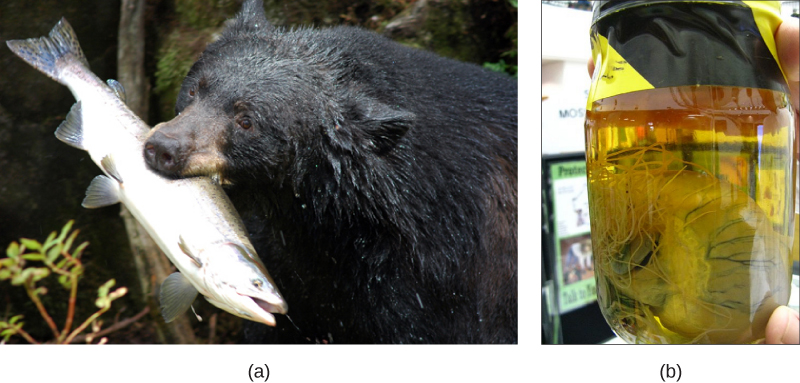| << Chapter < Page | Chapter >> Page > |
Stones grow; plants grow and live; animals grow, live and feel.Linneaus, in Philosophia Botanica , 1751
The differences between the animal, vegetable and mineral classes are a bit more complicated than the simple scheme of Linneaus. Members of the animal kingdom are incredibly diverse, but all animals share common features that distinguish them from organisms in other kingdoms. All animals are eukaryotic, multicellular organisms, and almost all animals have specialized tissues. All animals are motile, at least during certain life stages. Animals require a source of food to grow and develop. All animals are heterotrophic, ingesting living or dead organic matter. This form of obtaining energy distinguishes them from autotrophic organisms, such as most plants, which make their own nutrients through photosynthesis and from fungi that digest their food externally. Animals may be carnivores, herbivores, omnivores, or parasites ( [link] ). Most animals reproduce sexually: The offspring pass through a series of developmental stages that establish a determined body plan, unlike plants, for example, in which the exact shape of the body is indeterminate. The body plan refers to the shape of an animal.

A hallmark trait of animals is specialized structures that are differentiated to perform unique functions. As multicellular organisms, most animals develop specialized cells that group together into tissues with specialized functions. A tissue is a collection of similar cells that had a common embryonic origin that share a specialized function. There are four main types of animal tissues: nervous, muscle, connective, and epithelial .
Most animals have diploid body (somatic) cells and a small number of haploid reproductive (gamete) cells produced through meiosis. Some exceptions exist: For example, in bees, wasps, and ants, the male is haploid because it develops from an unfertilized egg. Most animals undergo sexual reproduction, while many also have mechanisms of asexual reproduction.

Notification Switch
Would you like to follow the 'Principles of biology' conversation and receive update notifications?